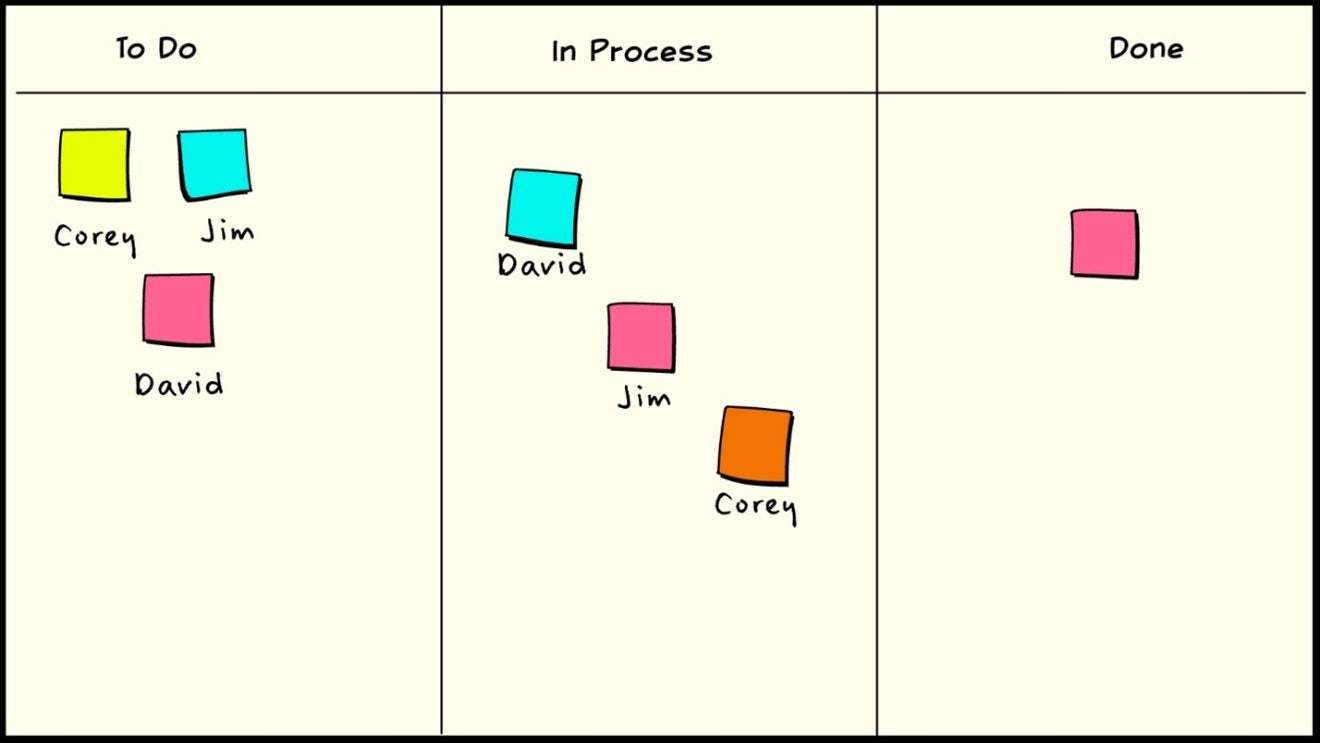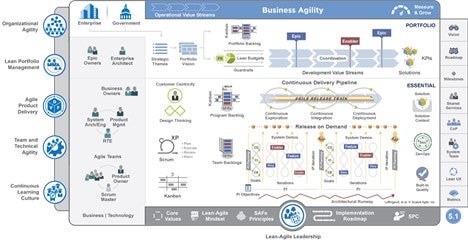Chapter 12. Agile (Adaptive) Project Management
12.3 Common Agile Framework and Methods
Although there are many agile approaches, only several of them are utilized commonly by organizations. The Agile Practice Guide by PMI (Project Management Institute) lists the single-team agile methods as below:
- Scrum
- Extreme Programming (XP)
- Kanban
- Crystal methods
- Scrumban
- Feature-Driven Development (FDD)
- Dynamic Systems Development Method (DSDM)
- Agile Unified Process (AgileUP)
Besides single-team agile approaches, higher-than-single-team level (e.g., enterprise-level) scaling frameworks are provided below:
- Scrum of Scrums
- Scaled Agile Framework (SAFe®)
- Large Scale Scrum (LeSS)
- Enterprise Scrum
- Disciplined Agile (DA)
12.3.1 Scrum
Scrum is the most utilized single-team agile method. It consists of roles, events, artifacts, and rules. Scrum events are sprints, sprint planning, daily scrum, sprint review, and spring retrospective. Scrum artifacts are product backlog, sprint backlog, and increments. It uses an iterative approach to deliver a working product (i.e., an increment) at the end of each timebox. These timeboxes are called sprints which last generally for one month, or four weeks, or shorter with consistent durations. When a two-week sprint duration is determined, all the sprints are set at two weeks. At the end each sprint, a potentially releasable increment of product is produced. A scrum team is composed of product owner, development team, and scrum master. The scrum master is responsible for ensuring the Scrum process is upheld and works to ensure the Scrum team adheres to the practices and rules as well as coaches the team on removing impediments[1].
12.3.2 Kanban
The Japanese word “kanban” means “visual board” or a “sign”. It was first developed and applied by Toyota as a scheduling system for just-in-time manufacturing[2]. The workflow is visualized on a Kanban (Figure 12.5). The Kanban board is also used by Scrum teams.

(Retrieved from https://www.agilealliance.org/scrumban/)
The work is split into pieces, and each item is written on a card. Then, they are put on the wall, or it can be visualized in a software program or a website such as Jira. Explicit limits are assigned in Kanban projects so that each workflow state can have limited number of in-progress items (Work in Progress – WIP). The team tries to finish these tasks in the shortest possible time. This lead time is measured so that the team can optimize the process to make the lead time as small and predictable as possible.
12.3.3 Scrumban
Scrumban is an agile approach originally designed as a way to transition from Scrum to Kanban[3]. Scrumban teams use Scrum as a framework and Kanban for process improvement. It uses the prescriptive nature of Scrum to be agile, and uses the process improvement of Kanban to allow the team to continually improve its process. In Scrumban, the work is organized into small “sprints” and leverages the use of Kanban boards to visualize and monitor the work. There are no predefined roles in Scrumban as is the case in Kanban. However, the Scrumban teams generally retain the Scrum roles.
12.3.4 eXtreme Programming (XP)
As the name implies, XP is utilized by software teams. It is an agile software development framework that aims to produce higher quality software, and higher quality of life for the development team. XP is the most specific of the agile frameworks regarding appropriate engineering practices for software development[4]. This method does not only focus on project management like other methods and frameworks do, but also focuses on how teams actually build code. Like Scrum, it has practices and values that help teams get into an effective mindset. One of the primary practices of XP is pair programming through which coding process is conducted by two developers working together at a single computer[5]. While one member works on coding, the second member checks the quality of the coding made by the first member. Another unique XP practice is the coding the unit test first. Before writing the code, a unit test is created so that new codes are automatically tested[6].
12.3.5 SAFe® (Scaled Agile Framework)
The SAFe is the most common scaling framework according to the 15th State of Agile Report published in 2021[7]. Thirty-seven percent of respondents indicated that their organization applies SAFe while 9% uses scrum of scrums and 6% uses enterprise scrum. The SAFe focuses on providing a knowledge base of patterns for scaling development work across all levels of the enterprise (Figure 12.6). It also focuses on detailing practices, roles, and activities at the portfolio, program, and team levels[8]. SAFe organizes the enterprise around value streams that focus on providing continuous value to the customer.

(Retrieved from https://www.scaledagileframework.com/)
- Project Management Institute. (2017). Agile Practice Guide. Project Management Institute. ↵
- Retrieved from https://kanbanize.com/kanban-resources/getting-started/what-is-kanban. ↵
- Project Management Institute. (2017). Agile Practice Guide. Project Management Institute. ↵
- Retrieved from https://www.agilealliance.org/glossary/xp/. ↵
- Retrieved from http://www.extremeprogramming.org/rules/pair.html. ↵
- Retrieved from http://www.extremeprogramming.org/rules/testfirst.html. ↵
- Digital.ai. (2021). 15th State of Agile Report. https://digital.ai/resource-center/analyst-reports/state-of-agile-report ↵
- Project Management Institute. (2017). Agile Practice Guide. Project Management Institute. ↵

